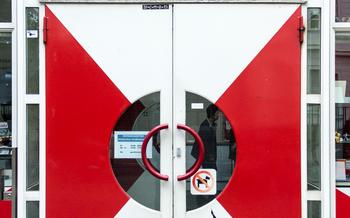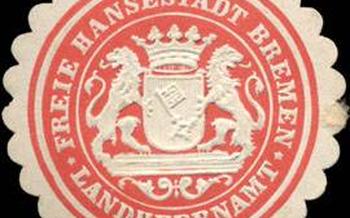
Regensburg Museum of Danube Shipping (Donau Schiffahrts Museum)
- The History of Shipping on the Danube
- The Museum's Collection
- Interactive Exhibits
- Temporary Exhibitions
- Guided Tours
- Educational Programs
- Museum Shop
- Museum Cafe
- Accessibility
- Hours and Admission
- Location and Transportation
- Nearby Attractions
- Insider Tip
The History of Shipping on the Danube
The Danube River has been a vital trade route for centuries, connecting the Black Sea to the North Sea. Its 1,777-mile (2,860-kilometer) length has made it a crucial waterway for the transportation of goods and people. The river has supported a diverse range of vessels, from small fishing boats to large cargo ships. The most common type of vessel on the Danube has been the barge, a flat-bottomed boat used to transport goods. Barges were often pulled by horses or oxen along the riverbanks, a method that remained popular until the advent of steam-powered engines.
Shipping played a crucial role in the development of Regensburg. The city was founded in the 1st century AD as a Roman military camp and quickly became an important trading center. Regensburg's location on the Danube made it a natural hub for trade between the Roman Empire and the Germanic tribes to the north.
Over the centuries, Regensburg grew into one of the most important cities in the Holy Roman Empire. Its wealth and prosperity were largely due to its position on the Danube, which allowed it to trade with a wide range of regions.
However, navigating the Danube was not without its challenges. The river's strong currents and numerous sandbars made it difficult for ships to travel safely. Shipwrecks were common, and many lives were lost in the river's treacherous waters.
Despite the challenges, shipping continued to thrive on the Danube. In the 19th century, the river was transformed by the introduction of steam-powered engines. Steamboats made it possible to travel against the current and to transport larger loads of goods. This led to a boom in shipping on the Danube, and Regensburg became one of the busiest ports on the river.
The Museum's Collection
The Regensburg Museum of Danube Shipping houses a vast and diverse collection of artifacts related to the history of shipping on the Danube River. The collection includes everything from model ships and navigational instruments to uniforms and photographs. One of the highlights of the collection is the scale model of the Regensburg Bridge, which was built in the early 1900s. The model is incredibly detailed and shows the bridge as it appeared before it was destroyed in World War II.
Another highlight of the collection is the collection of ship models. The models range in size from small wooden boats to large metal ships. They represent a variety of different types of vessels that have sailed the Danube over the centuries, including merchant ships, warships, and passenger ships.
The museum also has a large collection of photographs that document the history of shipping on the Danube. The photographs show everything from the construction of the first steamboats to the sinking of the Titanic. They provide a fascinating glimpse into the lives of the people who worked and traveled on the river.
The collection is organized into several different sections, each of which focuses on a different aspect of the history of shipping on the Danube. The sections include:
- The Early Years: This section covers the period from the Roman Empire to the Middle Ages. It includes exhibits on the early boats that were used on the Danube, as well as the role of shipping in the development of trade and commerce.
- The Age of Sail: This section covers the period from the Renaissance to the Industrial Revolution. It includes exhibits on the sailing ships that were used to transport goods and people up and down the Danube, as well as the challenges of navigating the river's many rapids and shallows.
- The Age of Steam: This section covers the period from the Industrial Revolution to the early 20th century. It includes exhibits on the steamships that revolutionized shipping on the Danube, as well as the role of shipping in the development of the modern economy.
- The Modern Era: This section covers the period from the early 20th century to the present day. It includes exhibits on the modern ships that are used to transport goods and people on the Danube, as well as the challenges of shipping in the 21st century.
Interactive Exhibits
The museum offers a variety of interactive displays that allow visitors to learn about the history of shipping on the Danube in a fun and engaging way. For example, visitors can try their hand at steering a virtual ship through the treacherous waters of the Iron Gates, or they can load and unload cargo using a replica of a medieval crane.
Children will particularly enjoy the interactive exhibits, which include a replica of a ship's cabin where they can dress up in traditional sailor's clothing and pretend to be on a voyage. There is also a hands-on display where kids can learn about the different types of knots used by sailors.
The interactive displays are a great way for visitors of all ages to learn more about the history of shipping on the Danube and the challenges that sailors faced. They are also a lot of fun, and they help to make the museum a memorable experience for everyone.
Temporary Exhibitions
The museum also hosts a variety of temporary exhibitions throughout the year. These exhibitions explore different aspects of shipping on the Danube, from the history of shipbuilding to the latest developments in river navigation.
Past exhibitions have covered topics such as the role of the Danube in the Roman Empire, the impact of the Industrial Revolution on shipping, and the challenges of navigating the Danube during wartime. The museum's temporary exhibitions are always well-received by visitors and help to keep the museum fresh and engaging.
Temporary exhibitions have had a significant impact on the museum's popularity. They have helped to attract new visitors to the museum and have also encouraged repeat visitors to come back and see what's new. The museum's temporary exhibitions are an important part of its overall mission to educate and entertain visitors about the history of shipping on the Danube.
To find out about upcoming exhibitions, visitors can check the museum's website or follow the museum on social media.
Guided Tours
The museum offers guided tours in German and English. Tours last approximately one hour and provide visitors with a comprehensive overview of the museum's collection. The tours are led by experienced guides who are knowledgeable about the history of shipping on the Danube and the exhibits on display. Guided tours are an excellent way to learn more about the museum's collection and the role of shipping in the development of Regensburg.
The cost of a guided tour is €5 per person. Tours can be booked in advance by calling the museum or by emailing them at [email protected]. Visitors can also book tours on the day of their visit, but it is advisable to book in advance to avoid disappointment.
Guided tours are available for groups of all sizes. The museum can accommodate groups of up to 30 people. For larger groups, it is possible to book two or more guides. The museum also offers guided tours for school groups. School tours are tailored to the specific needs of the students and can be booked by contacting the museum's education department.
Educational Programs
The museum offers a variety of educational programs designed to engage and inspire visitors of all ages. These programs include lectures, workshops, and guided tours.
Lectures are given by experts in the field of maritime history and cover a wide range of topics, from the history of shipping on the Danube to the challenges of modern-day shipping. Lectures are typically held in the museum's auditorium and are open to the public.
Workshops provide hands-on learning experiences for visitors of all ages. Workshops are typically held in the museum's education center and cover a variety of topics, such as building model ships and learning about the different types of cargo that are transported on the Danube.
Guided tours are led by knowledgeable museum staff and provide an in-depth look at the museum's collection. Guided tours are available in a variety of languages and can be customized to meet the needs of specific groups.
The museum's educational programs are designed to be both informative and entertaining, and they are a great way to learn more about the history of shipping on the Danube.
Target Audience
The museum's educational programs are designed for a wide range of audiences, including:
- School groups
- Families
- Adults
- Seniors
- People with disabilities
Goals
The goals of the museum's educational programs are to:
- Promote an understanding of the history of shipping on the Danube
- Inspire visitors to learn more about maritime history
- Develop critical thinking skills
- Encourage creativity
- Foster a love of learning
How to Register
To register for a program, please contact the museum's education department at (0941) 507-2434 or [email protected].
Museum Shop
The museum has a well-stocked shop that sells a variety of items related to the history of shipping on the Danube. These items include books, DVDs, postcards, and model ships. The shop also sells a selection of souvenirs, such as t-shirts, mugs, and keychains. The prices of items in the shop range from a few euros to several hundred euros.
The museum shop is a popular destination for visitors, and it is a great place to find unique gifts and souvenirs. The shop is located on the ground floor of the museum, and it is open during the same hours as the museum.
Museum Cafe
The museum cafe is a great place to relax and have a bite to eat after exploring the museum. It serves a variety of light snacks, sandwiches, and pastries, as well as hot and cold beverages. The cafe is decorated in a modern style with large windows that offer views of the Danube River.
The prices of food and drinks in the cafe are reasonable. A sandwich costs around €5, a pastry costs around €2, and a coffee costs around €The cafe is popular with both tourists and locals, so it can be crowded during peak times.
The atmosphere of the cafe is relaxed and inviting. It is a great place to sit and enjoy a cup of coffee or tea while people-watching or reading a book. The cafe also has free Wi-Fi, so visitors can stay connected while they enjoy their refreshments.
To find the museum cafe, simply follow the signs from the museum's entrance. The cafe is located on the ground floor of the museum, next to the museum shop.
Accessibility
The museum has been designed to be accessible to visitors of all abilities. The main entrance is wheelchair accessible, and there is a lift to all floors. Once inside, visitors will find that all of the exhibits are clearly labeled and easy to understand, and there are plenty of places to sit down and rest.
If you have any specific accessibility needs, please let the museum staff know when you book your tickets. They will be happy to make arrangements to ensure that you have a comfortable and enjoyable visit.
Accommodations are available for visitors with disabilities, such as:
- Wheelchair accessible entrance
- Lift to all floors
- Clearly labeled and easy-to-understand exhibits
- Plenty of places to sit down and rest
- Assistive listening devices
- Large print materials
- Braille signage
To request accommodations, please contact the museum in advance. The museum staff will be happy to assist you in any way they can.
There is no additional cost for accommodations.
For more information about accessibility at the museum, please visit their website or contact them directly.
Hours and Admission
The Regensburg Museum of Danube Shipping is open every day of the week except for Mondays, from 10 a.m. to 5 p.m. The cost of admission is €5 for adults, €3 for students and seniors, and free for children under There are also a number of discounts available, such as group discounts, family discounts, and discounts for visitors with disabilities. Tickets can be purchased online or at the museum's ticket office.
Location and Transportation
The Regensburg Museum of Danube Shipping is conveniently located in the heart of the city, within walking distance of many other popular attractions. The museum is situated at Wolfgang-Amadeus-Mozart-Strasse 2-4, 93047 Regensburg, Germany.
To get to the museum by public transportation, take the bus or tram to the "Haidplatz" stop. From there, it is a short walk to the museum.
The cost of public transportation varies depending on the type of ticket you purchase. A single ticket costs €50, while a day pass costs €00.
To get to the museum by car, take the A93 Autobahn and exit at "Regensburg-Süd." From there, follow the signs to the city center. The museum is located in a paid parking lot, so be sure to have change on hand.
Nearby Attractions
The Regensburg Museum of Danube Shipping is situated in the heart of the city's Old Town, which is a UNESCO World Heritage Site. This means that there are plenty of other attractions to explore within walking distance of the museum. Some of the most popular nearby attractions include:
-
St. Peter's Cathedral: This magnificent Gothic cathedral is one of the most iconic landmarks in Regensburg. It is home to a number of important works of art, including the 13th-century stained glass windows.
-
The Stone Bridge: This medieval bridge is one of the oldest surviving bridges in Germany. It offers stunning views of the Danube River and the Old Town.
-
The Old Town Hall: This historic building is home to the city's government. It is also a popular tourist attraction, thanks to its beautiful architecture and its collection of medieval artifacts.
-
The Kepler Museum: This museum is dedicated to the life and work of Johannes Kepler, one of the most famous scientists of the 17th century. It is a great place to learn about the history of astronomy and the development of the scientific method.
-
The Bavarian State Museum of Egyptian Art: This museum houses a collection of over 5,000 Egyptian artifacts, including mummies, sarcophagi, and statues. It is one of the most important museums of its kind in the world.
These are just a few of the many attractions that are within easy reach of the Regensburg Museum of Danube Shipping. With so much to see and do, you'll be spoiled for choice.
Insider Tip
If you're a history buff, be sure to check out the museum's hidden gem: the model ship collection. This collection features over 500 model ships, from ancient galleys to modern ocean liners. The models are incredibly detailed and accurate, and they provide a fascinating glimpse into the history of shipbuilding and navigation.
Another insider tip is to take advantage of the free admission on the first Sunday of every month. This is a great opportunity to visit the museum without having to worry about paying an entrance fee.
But if you're really looking for a unique experience, try to visit the museum during one of its special events. The museum hosts a variety of events throughout the year, including lectures, workshops, and family-friendly activities. These events are a great way to learn more about the museum's collection and the history of shipping on the Danube.



